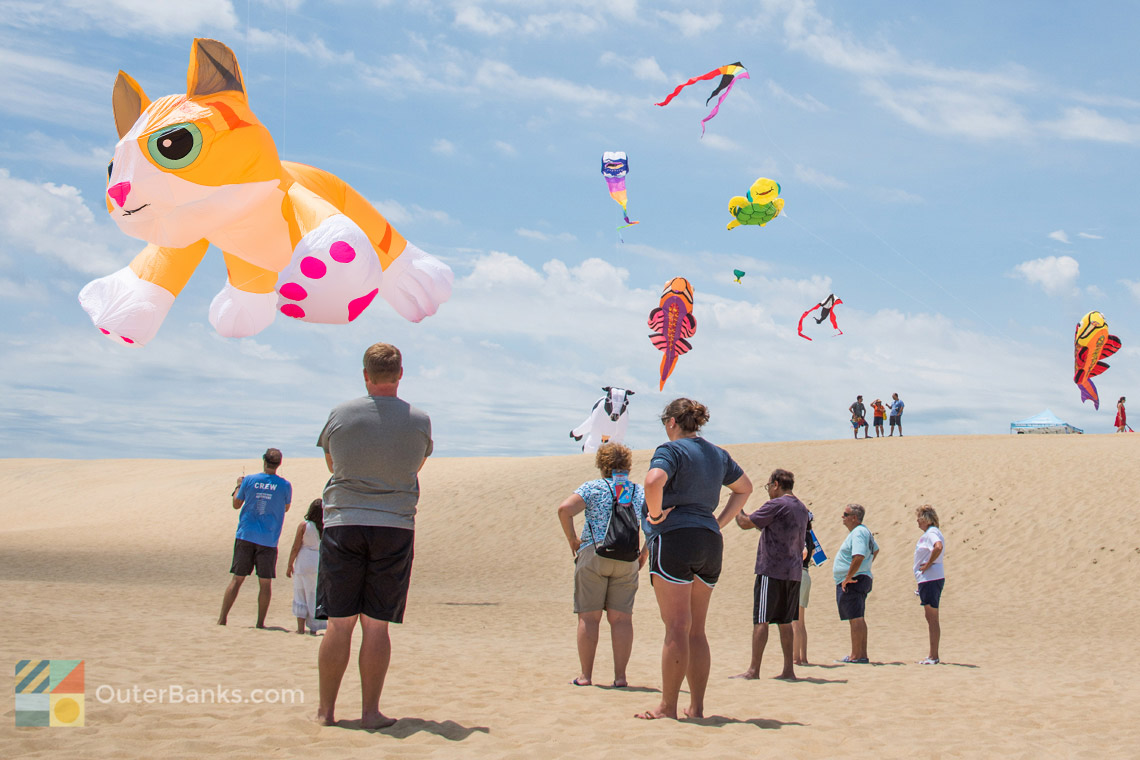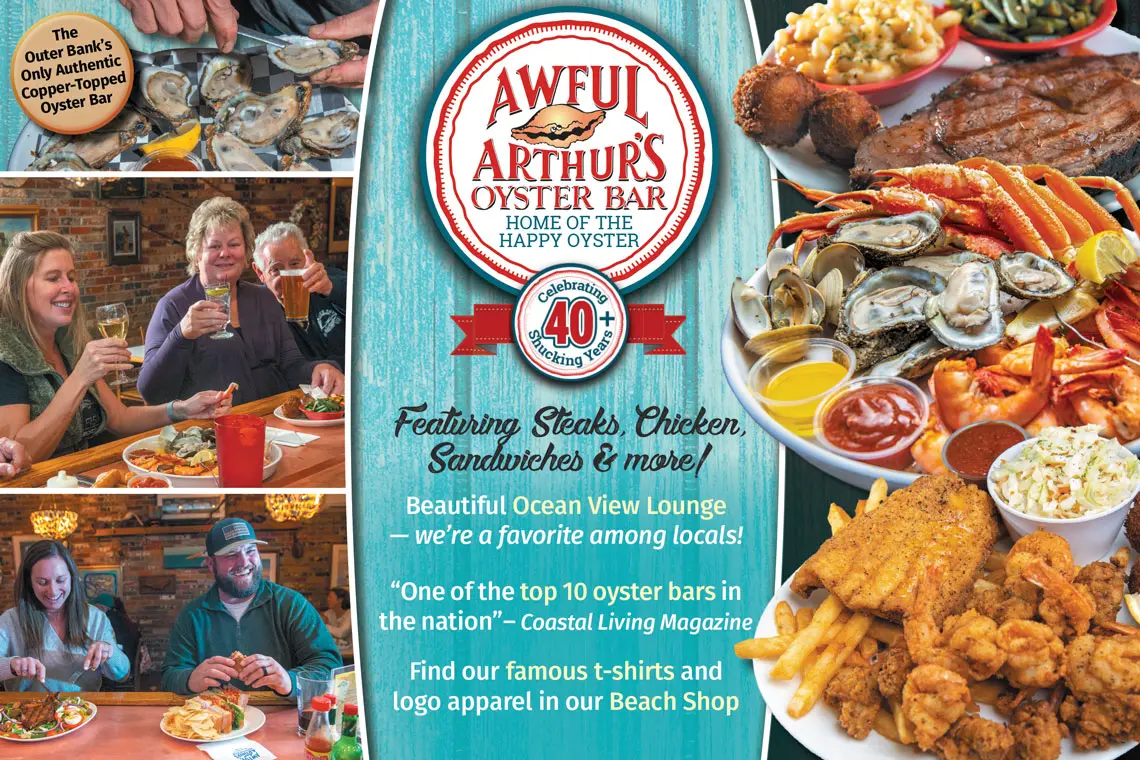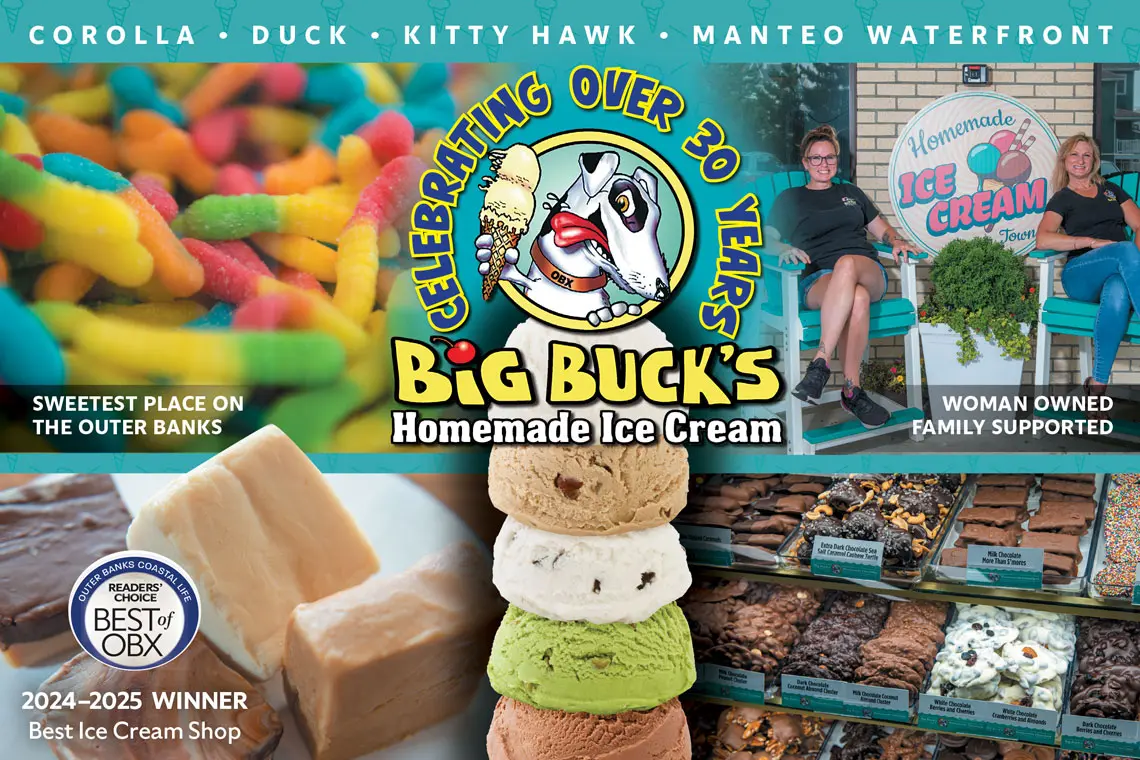
Seasoned visitors to Ocracoke Island love to soak in its rich heritage and culture which dates back to the 1500s, and features some legendary and longstanding residents. Some of the most popular Ocracoke locals are the Wild Ponies, which are protected in a secluded 180 acre area enclosure on the soundside of the Cape Hatteras National Seashore, but can still be enjoyed by anyone passing through the island on NC Highway 12.

The Wild Ponies, also referred to as Ocracoke's "Banker" Ponies or Ocracoke's wild mustangs or horses, are timid and decidedly feral, and kept separated from the public via a long wooden fence, but even at a distance they are a sight to behold. Remnants of a stormy past which included multiple shipwrecks and salty, struggling villages, the horses are a reminder to visitors, locals and historians alike of Ocracoke's deep cultural roots, and ongoing preservation of its prized and storied history.
The History of the Ocracoke Wild Ponies
Like neighboring barrier islands that also feature wild horses, specifically the communities of Carova to the north and the Shackleford Banks to the south, the Ocracoke Wild Ponies are direct descendants of shipwrecks.
European explorers had been skimming by the Outer Banks as early as the 1500s, and more than one ship was lost to the rough and shifting waters that lay just offshore. The Diamond Shoals are the most notable hindrance to mariners, as this collection of always-changing sand bars have historically caused hundreds if not thousands of ships to run aground while still in the middle of the ocean, and as a result, be subsequently battered and destroyed by the onslaught of approaching waves. Hurricanes and winter storms did their fair share of damage as well, as early explorers and mariners had limited methods of determining when a fast-approaching nor'easter or summer squall was on the horizon.
The end result is a history of Outer Banks shipwrecks that begins with the very first explorers, and many historians postulate that the arrival of these mysterious horses on the beach coincided with just such an ancient shipwreck.
The very first Spanish explorers of the 1500s often skirted the coastline with cargo holds filled with gifts both for and from the New Worlds of the West Indies. These goods included coffee, sugar, tools and supplies, and of course, Spanish Mustangs, which were instrumental work horses for the new settlements as well as modes of transportation for the explorers once onshore.
Some historians believe that the arrival of the Ocracoke horses can be traced back to a Spanish shipwreck that occurred in 1565. The ship Tiger, which was commandeered by Sir Richard Greenville, ran aground just off the coast of Ocracoke, and many believe that Greenville unloaded all of his livestock, and specifically the Spanish Mustangs, ashore. As a more general theory of the Wild Ponies arrival, historians point out that when a ship did get stuck in the shallow regions of the Diamond Shoals, they unloaded their heaviest goods so the ship wouldn't be quite so weighted down, and this practice included throwing livestock overboard to lighten the load.
In any case, reports of the Wild Ponies can be traced back to the 1730s, when Ocracoke's earliest settlers discovered them and realized that they were a beneficial addition to the newfound communities. Over the following centuries, the horses were used as beasts of burden for manual labor, prominent stars in local races, and even simple vehicles to enjoy a ride on the beach.
The horses were even utilized by the US Life Saving Service in the late 1800s as "beach patrols" and to help haul heavy equipment to shipwreck or rescue sites. Over the decades, certain horses were claimed by local families, and branded and kept on island, or sold to mainland communities, while the rest were released back into the wild. By the late 1950s, residents and the National Park Service alike had recognized the importance of the Wild Ponies to the island's local history and culture, and steps were put in place to protect them from the increase in traffic and tourism.
For several years, the horses were cared for and protected by the local Ocracoke Boy Scout troop, the only mounted scout troop in the country. By 1959, the National Park Service had completed work on a soundside pen, which was large enough for the horses to roam, but protected them from the newly constructed highway.
While at one point the number of Ocracoke Wild Ponies on the island was estimated at 300, today only 17 horses remain of the original Spanish herd. But hopefully, with combined National Park Service (NPS) and local efforts, as well as a safe and protected environment, the horses will once again flourish on Ocracoke Island.
Visiting the Ocracoke Wild Ponies
Visitors can catch a glimpse of the Ocracoke Wild Ponies with a visit to the borders of the fenced in area that is located close to the feeding stations, an area which is referred to as the Ocracoke Pony Pen.
Driving along NC Highway 12, visitors will spot a brown NPS sign indicating the Pony Pen, as well as a soundside parking area that abuts the wooden fence borders. Here, vacationers can simply pull over, step outside the vehicle, and look for any horses that are passing through.
Visitors can almost always spot a horse or two, either out in the distance, or sometimes right next to the perimeters of the fence area and literally just a few feet away. Even if one visit leads to an unsuccessful wild horse sighting, the next visit could be completely different, and visitors are welcome to cruise by the pony pen any time they'd like. Open to everyone throughout the year, and at all times, drivers can simply stop by the Pony Pen for a quick glance or a long look at any time.
Several informative displays are set up around the fence's borders, explaining the history and local legends of the Ocracoke Wild Ponies. Although the area is not manned full-time, NPS rangers occasionally make an appearance both outside and inside the enclosure, as they refill the hay and water bales, or simply stop by to ensure the horses are doing well.
The horses themselves can be a slightly unusual or surprising sight to new visitors. When most people think of "Spanish Mustangs," particularly wild ones, they envision massive beasts with wild manes roaming free or running like mad along the shoreline. At the Ocracoke Pony Pen, however, this is not the case.
The horses are actually much smaller than standard modern horses, with squat but bulky frames and smaller legs. They have the distinctive wild manes and tails, but are actually quite docile and seemingly content to spend their days grazing along the soundside beaches of Ocracoke Island. Clearly, over the centuries, the horses have adapted to the laid-back atmosphere that Ocracoke is known for.
The horses come in a variety of solid brown and patterned colorings, with dark brown or even light gray spots. Essentially, the herd doesn't have a uniform color, and while all the horses have a smaller stature, they all look just a little bit different and unique.
While it's possible for drivers and passengers with an eagle eye to spot the horses roaming along the soundside borders of NC Highway 12, the best way to spot these wild creatures is with a stop at the Ocracoke Pony Pen. Horse lovers of all ages will get a thrill out of viewing the horses in their native Ocracoke habitat, and every trip may present an entirely different view, and new encounter, with Ocracoke Island's oldest residents.
Tips and Tricks for Visiting the Ocracoke Wild Ponies
- While the Ocracoke Wild Ponies certainly look and act docile, never forget that they are wild and feral animals. Visitors should never try to pet or feed the horses, or enter the pony pen for a closer look. The area is monitored to ensure the horses are not disturbed, and failure to follow these guidelines will result in a very steep NPS fine. The good news is that even at a distance, the horses are a fantastic site, and visitors to the Ocracoke Pony Pen will typically spot at least one horse at fairly close range, near the feeding station or simply making its way around the perimeter. You may want to bring a pair of binoculars or a camera with a high zoom lens, just in case the ponies are shy during the day of your visit.
- Need a refreshing dip in the ocean after a little horse-spotting on a hot day? The soundside parking lot is actually located across the street from a beach access, which leads out to one of Ocracoke's gorgeous and unpopulated oceanside beaches. There are in fact a number of both ocean and soundside parking areas along this stretch of NC Highway 12, including a lifeguarded ocean beach and a soundside nature trail, both located approximately 3 miles south of the Ocracoke Pony Pen. Turn a quick wild horse visit into a full day at the beach by exploring the parking areas and beach paths that are located around this area.
- Horse lovers who want to contribute to the preservation of the Ocracoke Wild Ponies can elect to "Adopt-a-Pony" through a charitable program offered by the National Park Service. For a small donation of $25 - $30 dollars, pony patrons will receive a primer and photos of the horse they adopted, an overview of the horse's history, and a certificate of adoption. This small contribution not only helps feed the horses and provide regular veterinary care, but also allows visitors to "stay connected" with their favorite Ocracoke residents well after their Outer Banks vacation is over.
The Ocracoke Wild Ponies are easily one of the island's favorite attractions, which is no small accomplishment considering the fantastic beaches, attractions, and charming shops and restaurants that Ocracoke Island has to offer.
On your next visit to Ocracoke, be sure and schedule in a quick 5 or 10 minute stop at the Ocracoke Pony Pen to see what these wild natives are up to. Easily accessible along NC Highway 12, and always open to visitors, every trip by the Ocracoke Pony Pen is guaranteed to serve up a new perspective and a new encounter with one of the island's most famous local residents.
-
Cape Hatteras Anglers Club Invitational Surf Fishing Tournament
November 5th, 2025 - November 8th, 2025 -
OBX Veterans Week
November 7th, 2025 - November 13th, 2025 -
Tipsy Turkey Beer Mile
November 26th, 2025 10:00 AM
Welcome to the home of the happy oyster where for over 40 years the oyster has been our world. The Outer Banks only authentic oyster bar is the place to enjoy sensational fare from the sea washed down with your favorite brew or cocktail. We serve by...
In the waters off the coast of North Carolina lies a world of adventure and competition brought vividly to life by the TV series "Wicked Tuna: Outer Banks." This captivating show, an offshoot of National Geographic's highly successful "Wicked Tuna,...
Serving our customers on the Outer Banks since 1994, Big Buck's ice Cream is dedicated serving you “The Best.” We offer a full line of super-premium ice cream products, smoothies, chocolates, and custom-made ice cream cakes! 2 locations...




